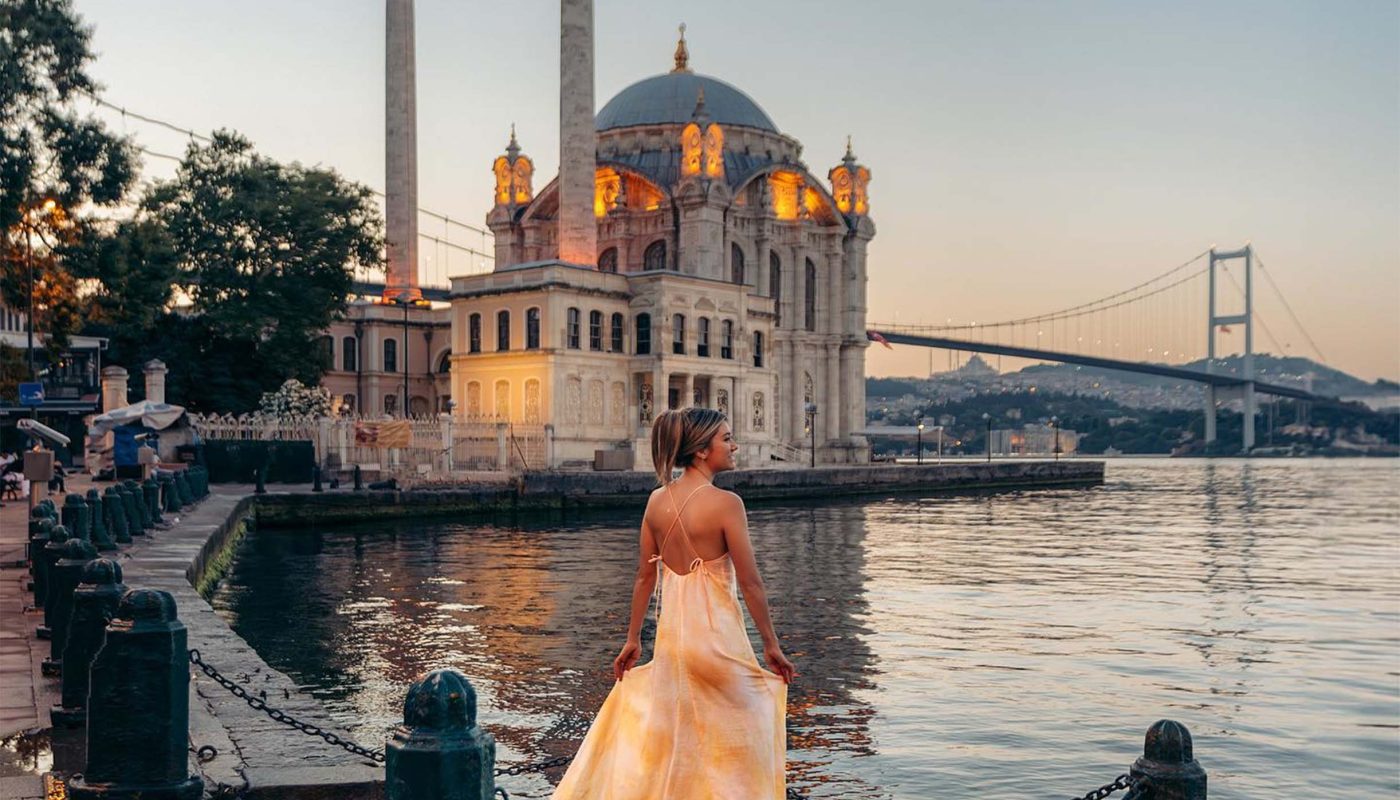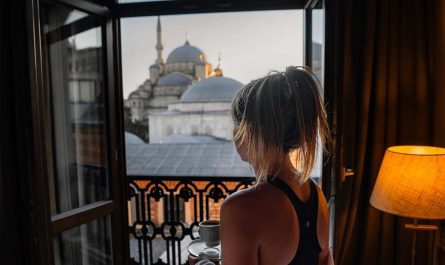Table of Contents:
- The Magnificence of Hagia Sophia
- The Blue Mosque: Where Tranquility Meets Grandeur
- Comparing Hagia Sophia and the Blue Mosque: A Tale of Two Icons
- The Charm of Istanbul’s Old City: Beyond Hagia Sophia and the Blue Mosque
- Istanbul’s Culinary Delights: A Gastronomic Adventure
- Navigating Istanbul: Tips for a Seamless Experience
My journey to Istanbul in June was nothing short of magical. Istanbul, a city where the past seamlessly intertwines with the present, had long been on my travel bucket list. One of the most captivating aspects of this enchanting city is its historic heart, which boasts two iconic landmarks: Hagia Sophia and the Blue Mosque. Join me as I take you on a vivid and immersive journey through these breathtaking sites, offering insights into ticket information, opening hours, and my personal experiences. But that’s not all – we’ll also explore Istanbul’s culinary delights, share tips for navigating this vibrant city, and uncover the hidden gems that lie beyond these two famous landmarks.
The Magnificence of Hagia Sophia
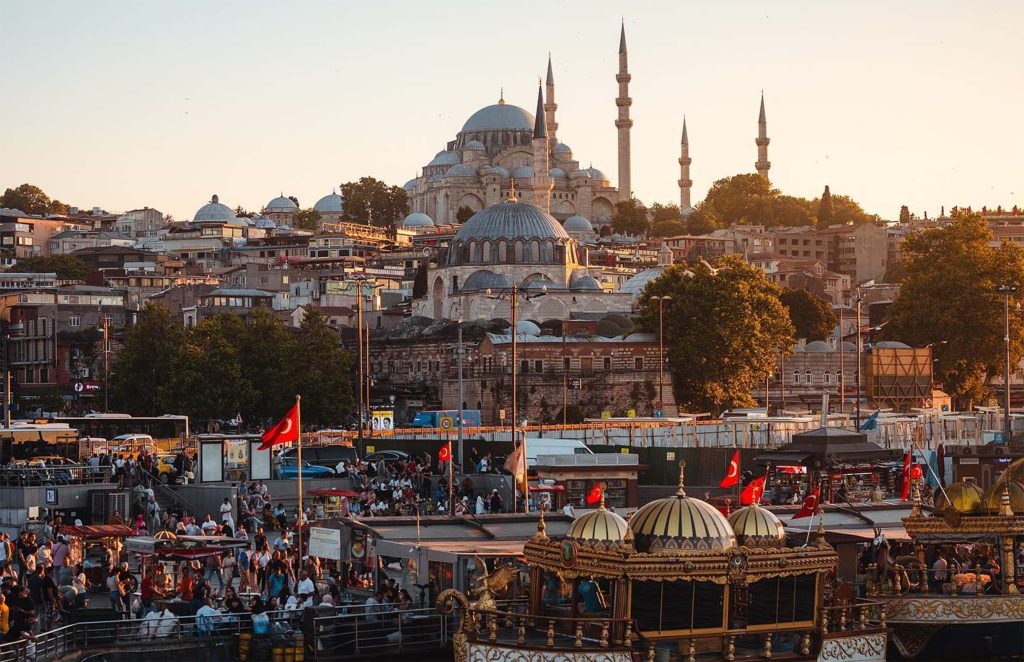
Our voyage of discovery commences with a visit to Hagia Sophia, a place that embodies the essence of Istanbul’s rich history and cultural heritage.
Ticket Information and Opening Hours
- Ticket Price: As of my visit in May 2023, the admission fee for Hagia Sophia was 100 Turkish Lira, which is approximately $11 USD. Please keep in mind that ticket prices may be subject to change, so it’s advisable to verify the latest rates before your visit.
- Opening Hours: Hagia Sophia typically opens its doors to visitors at 9:00 AM. Nevertheless, it’s prudent to double-check the closing time, as it can vary based on the season and specific days.
My Hagia Sophia Odyssey
Passing through the massive doors of Hagia Sophia, one is instantaneously transported to a world where history unfolds before their eyes. The grandeur of this ancient structure is overwhelming, and a sense of reverence washes over you as you step inside. My journey through Hagia Sophia’s hallowed halls was akin to a pilgrimage through time.
The enormity of the dome, adorned with intricate mosaics and colossal chandeliers, is an awe-inspiring spectacle. As I roamed the interior, my gaze was perpetually drawn upwards, contemplating the sheer brilliance of the architects who envisioned this masterpiece more than a millennium ago.
What sets Hagia Sophia apart are its astonishing mosaics that grace its interior. These intricate works of art, portraying religious scenes and iconic figures, provide a window into the history and cultural evolution of this extraordinary edifice. The mosaics have been meticulously restored, and their vibrant colors and intricate details bear testament to the craftsmanship of their creators.
Hagia Sophia’s unique history – having served as both a cathedral and a mosque before becoming a museum – has left a lasting imprint on its architecture and ambiance. The mihrab and minbar, added during its tenure as a mosque, coexist harmoniously with the Christian iconography. This convergence of religious and cultural elements is what lends Hagia Sophia its unparalleled allure.
As someone with a passion for fitness, I found great satisfaction in ascending to the upper galleries, where one can gain a bird’s-eye view of the grandeur below. The ascent involves traversing a series of steep ramps and stairs, but the panoramic perspective of the interior is a reward that surpasses the physical exertion.
The Blue Mosque: Where Tranquility Meets Grandeur
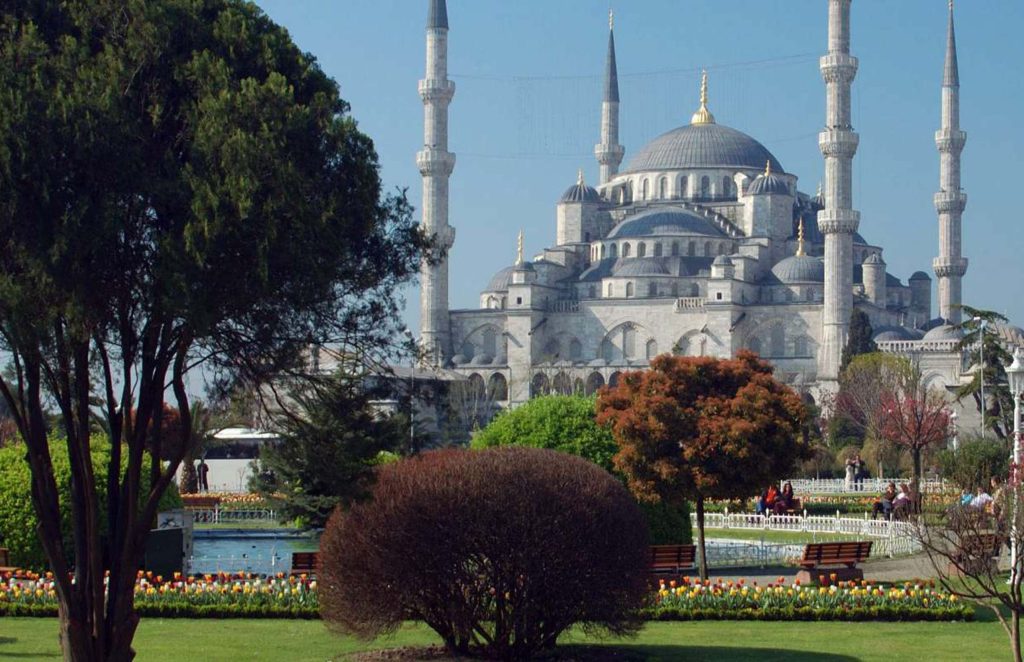
From the mesmerizing Hagia Sophia, my footsteps led me to the Blue Mosque, officially known as the Sultan Ahmed Mosque – another architectural marvel that graces the heart of Istanbul.
Ticket Information and Opening Hours
- Ticket Price: Notably, the Blue Mosque doesn’t impose an admission fee for visitors. However, the mosque welcomes donations to support its upkeep and preservation.
- Opening Hours: The Blue Mosque is accessible to visitors outside of its prayer times. It’s prudent to plan your visit to coincide with these hours and consult the mosque’s prayer schedule.
My Blue Mosque Sojourn
As I approached the Blue Mosque, the sight of its six graceful minarets and the majestic domes left me in awe. The exterior of the mosque is an exemplar of Ottoman architectural mastery, adorned with intricate tilework and the renowned blue Iznik tiles that have bestowed the mosque its popular moniker.
Before entering the mosque, I observed the ablution fountains, where both visitors and worshippers ritually cleanse themselves prior to prayer. This practice, a pivotal facet of the Islamic faith, was a captivating aspect to witness.
Stepping into the mosque’s interior, I was immediately struck by the atmosphere of tranquility and elegance. The soaring, domed ceilings convey a sense of spaciousness, while the prominent central chandelier and the gentle blue hues of the tiles contribute to an ambiance of serenity. As I removed my shoes and strolled across the plush carpets, a profound sense of respect and reverence enveloped me.
What distinguishes the Blue Mosque are the intricate tileworks that adorn its interior. The delicate blue and white tiles, featuring intricate floral patterns and calligraphy, are nothing short of exquisite. They enhance the overall sense of peace that permeates the mosque’s interior, and I couldn’t resist sitting for a moment to soak in the beauty that enveloped me.
The grand prayer niche, known as the mihrab, is a central focus of the mosque and is embellished with captivating geometric patterns and Quranic inscriptions. Adjacent to the mihrab, the imam’s pulpit, or minbar, stands as a testament to the artistry and craftsmanship that characterizes the Blue Mosque. My visit left me with an appreciation for the meticulous attention to detail that has gone into creating this sacred space.
Comparing Hagia Sophia and the Blue Mosque: A Tale of Two Icons

Visiting both Hagia Sophia and the Blue Mosque within a single day provided me with the opportunity to appreciate the contrasting yet complementary facets of these two remarkable landmarks.
Hagia Sophia, with its rich historical significance and architectural splendor, is a must-visit for those intrigued by history and art. The seamless integration of Christian and Islamic elements within its walls reflects a unique form of cultural harmony.
Conversely, the Blue Mosque offers a serene and spiritually uplifting experience. Its sophisticated design and the exquisite tilework transform it into a haven of beauty and introspection. The absence of an admission fee exemplifies a thoughtful gesture, welcoming visitors from all walks of life to experience its grandeur.
While both sites are remarkable in their own right, the juxtaposition of their distinct characteristics makes a visit to Istanbul all the more enriching. Hagia Sophia and the Blue Mosque are emblematic of Istanbul’s exceptional ability to harmoniously meld diverse cultures and historical narratives, creating a unique tapestry that is both mesmerizing and unforgettable.
The Charm of Istanbul’s Old City: Beyond Hagia Sophia and the Blue Mosque

Although Hagia Sophia and the Blue Mosque hold an undeniable allure, Istanbul’s Old City offers a wealth of other attractions and experiences to be uncovered.
The Topkapi Palace, another architectural marvel, is within close proximity and merits exploration. This former royal residence is a testament to Ottoman opulence and offers an opportunity to delve into the lives of sultans and their harems. The palace’s beautifully landscaped courtyards provide respite from the city’s bustle, and the Harem, with its intriguing history, offers a fascinating glimpse into the life of the Ottoman elite.
Further enhancing the charm of the Old City are the Basilica Cistern, an ancient subterranean water reservoir filled with mysterious columns and haunting medusa heads, and the Hippodrome, once the heart of Byzantine Constantinople. These lesser-visited attractions are gems that deserve attention.
Venture through the labyrinthine streets of the Grand Bazaar and the Spice Bazaar to immerse yourself in Istanbul’s vibrant market culture. The aromas of exotic spices, the kaleidoscope of colorful textiles, and the gleam of intricate jewelry will captivate your senses. Bargaining with local vendors is not just a transaction; it’s an art form that allows you to engage with the city’s residents and savor the spirit of Istanbul.
Istanbul’s Culinary Delights: A Gastronomic Adventure
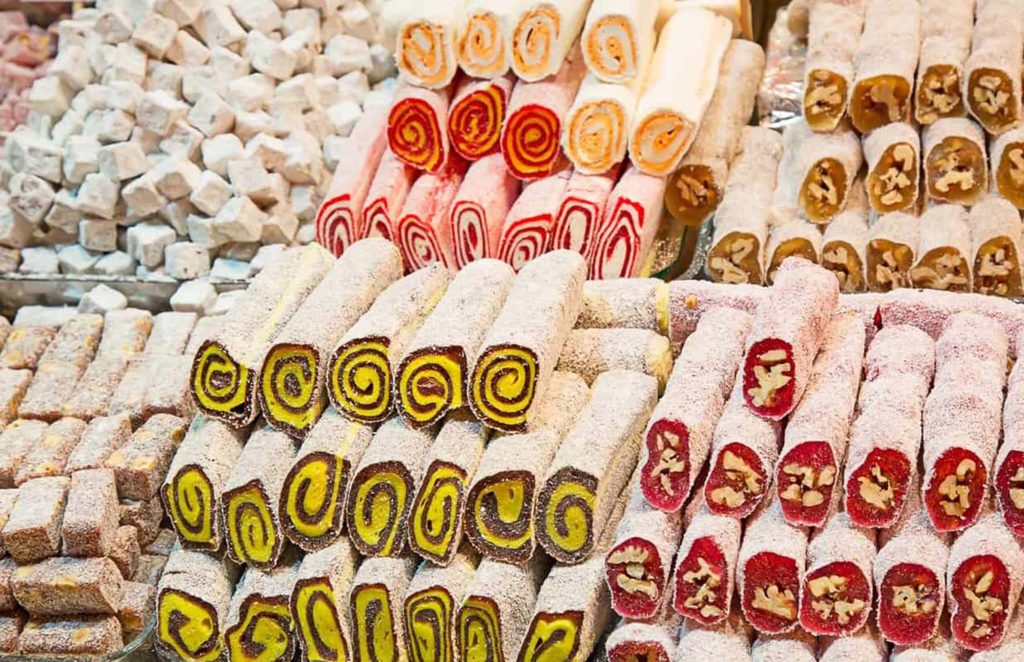
Istanbul is a city where the culinary arts take center stage. The fusion of diverse influences and ingredients creates a culinary tapestry that is both rich and diverse.
Savoring the Flavors of the Grand Bazaar
One of my most treasured experiences in Istanbul was exploring the culinary delights of the Grand Bazaar. The Grand Bazaar is a food lover’s paradise, offering an array of Turkish delights, baklava, and spices that will titillate your taste buds.
Don’t miss the opportunity to sample morsels of baklava, the sweet and flaky pastry that is synonymous with Turkish cuisine. My personal favorite was the pistachio baklava, a delectable treat that was impossible to resist.
The aroma of freshly ground Turkish coffee wafting through the bazaar’s air is an invitation you must accept. Turkish coffee is an art form, prepared with precision and care. Sipping this strong and aromatic brew from a traditional demitasse cup is an experience that transcends mere coffee drinking.
For those craving a heartier meal, the Grand Bazaar offers a diverse selection of kebabs, gözleme (savory Turkish flatbreads), and delectable Turkish delight. Exploring the market’s food stalls, you’ll find that every turn presents a new culinary adventure.
The Joy of Turkish Tea and Coffee
Turkish tea and coffee are not just beverages; they are integral to the cultural fabric of Istanbul. For me, sipping on a glass of freshly brewed Turkish tea while overlooking the Bosphorus was a moment of pure tranquility. The warmth of the tea and the spectacular views create a sense of serenity that’s hard to match.
Turkish coffee, on the other hand, is a richer and more intense experience. The thick and aromatic brew is best enjoyed in a traditional coffeehouse. The process of brewing and sipping Turkish coffee is an art that invites contemplation and conversation. Don’t rush it; savor every sip and let the world pass you by.
Navigating Istanbul: Tips for a Seamless Experience
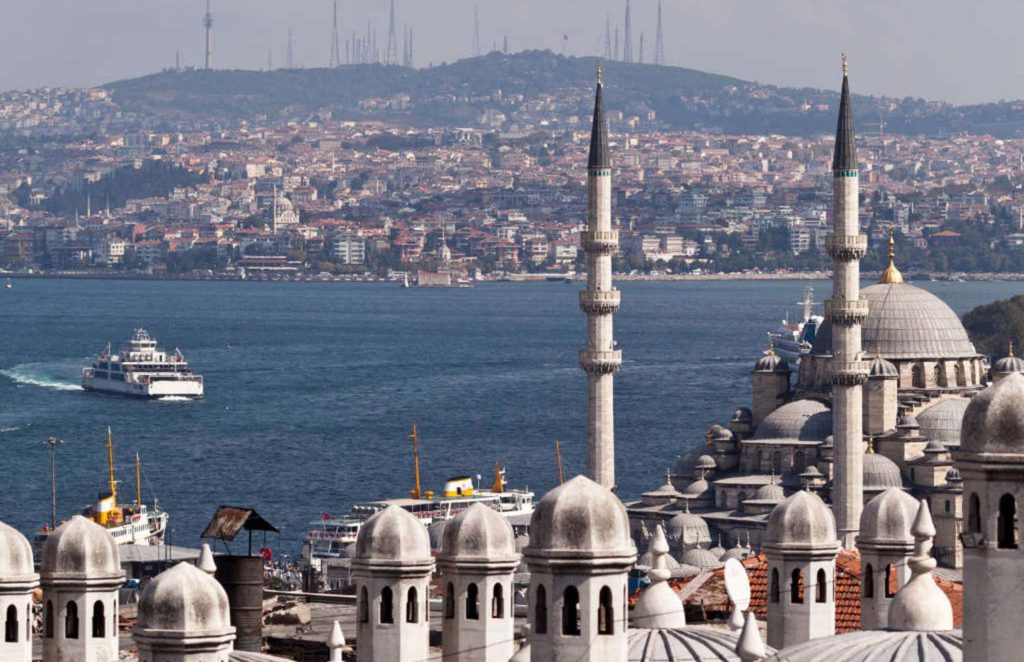
Visiting a city as vibrant and multifaceted as Istanbul can be an incredibly rewarding experience, provided you are equipped with some practical knowledge to navigate its intricacies.
Cultural Etiquette and Respect
Istanbul is a city that prides itself on its rich history and cultural heritage. To ensure a positive and respectful experience, it’s essential to be mindful of local customs and etiquette. When visiting religious sites like the Blue Mosque, remember to dress modestly, covering your shoulders and knees, and remove your shoes before entering. Demonstrating respect for these traditions not only fosters a more enriching experience but also reflects a deeper appreciation for the city’s culture.
Beating the Crowds
Popular landmarks like Hagia Sophia and the Blue Mosque can get crowded, especially during peak tourist seasons. To make the most of your visit, consider arriving early in the morning or later in the afternoon to avoid the heaviest crowds. Additionally, purchasing tickets in advance or considering guided tours can expedite your entry.
Seasons of Istanbul: When to Visit
Istanbul’s climate varies throughout the year, so choosing the right season for your visit can enhance your experience. Spring and autumn are often considered the best times to visit, with pleasant temperatures and fewer tourists. Summers can be hot, and winters can be chilly, but each season offers its own unique charm. Be sure to pack accordingly, and keep in mind that Istanbul can experience occasional rain showers, especially in the spring.
Getting Around Istanbul
Navigating Istanbul’s extensive and efficient public transportation system is a breeze. The city boasts a well-connected network of trams, buses, ferries, and the Istanbul Metro. The Istanbulkart, a reloadable contactless card, offers a convenient way to access all forms of public transport and is a cost-effective option for travelers.
If you prefer a more scenic route, consider taking a cruise along the Bosphorus. The picturesque journey offers breathtaking views of both the European and Asian sides of the city. It’s a unique way to appreciate Istanbul’s distinctive geographical location.
My day exploring Hagia Sophia and the Blue Mosque was a profound journey through time, culture, and spirituality. Istanbul, a city that straddles two continents and bridges the gap between the past and the present, is a destination that will forever hold a special place in my heart.
I found that my passion for exploration seamlessly blended with my visit to these awe-inspiring landmarks. Climbing the steep ramps of Hagia Sophia, exploring the intricacies of the Blue Mosque, and meandering through the enchanting streets of Istanbul provided a well-rounded experience that catered to both my love for adventure and my desire for historical and cultural enrichment.
While Hagia Sophia and the Blue Mosque are undeniably the crown jewels of Istanbul, the city has so much more to offer. The Topkapi Palace, the Basilica Cistern, the Spice Bazaar, and the Grand Bazaar are just a few of the hidden treasures waiting to be uncovered.
Istanbul’s cuisine is a feast for the senses, and indulging in Turkish tea, coffee, and delectable street food is a journey in itself. The city’s rich gastronomic landscape reflects its diverse influences and is an adventure worth savoring.
Navigating Istanbul is a breeze with a bit of local knowledge. By adhering to cultural etiquette, being mindful of peak tourist times, and exploring the city’s offerings in different seasons, you can make the most of your visit.
Istanbul, with its enchanting blend of history, architecture, and culture, is a city that will continue to beckon travelers for generations to come. My hope is that, after reading this article, you are inspired to embark on your own adventure in this captivating metropolis. Istanbul truly is a place where the past and present coexist harmoniously, offering an experience that transcends time and leaves an indelible mark on all who have the privilege to explore it.
